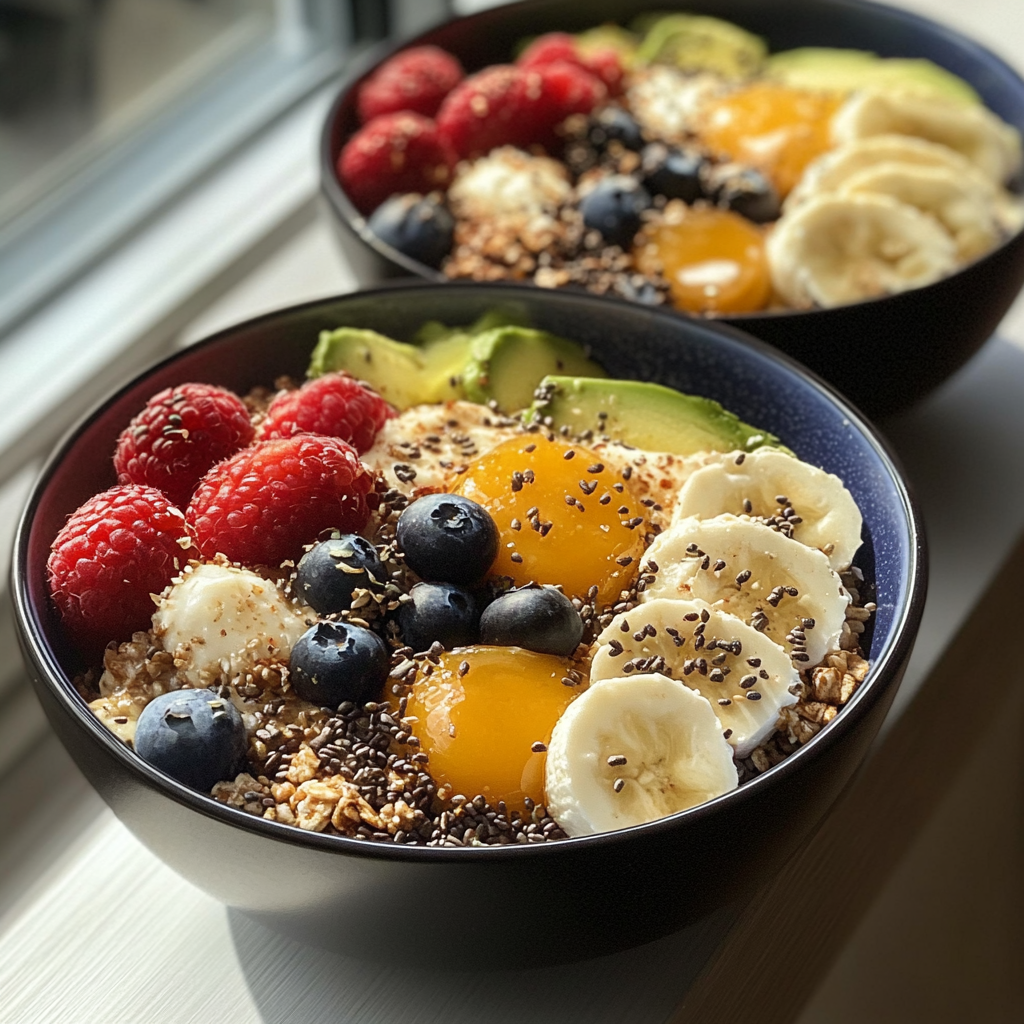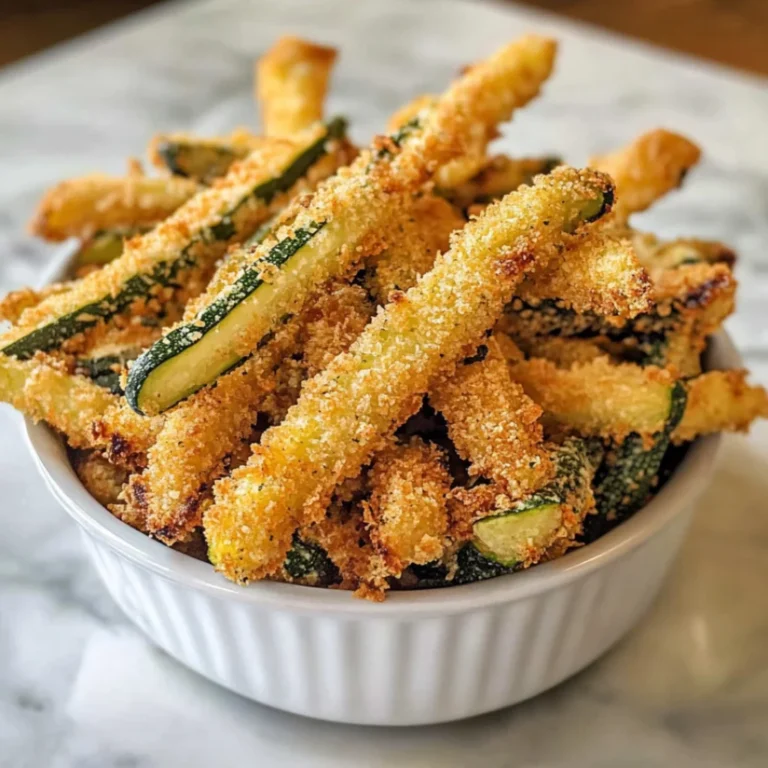Follow Me On Social Media!
High Protein Breakfast Bowls
Introduction
Did you know that people who eat high-protein breakfasts are 65% more likely to maintain stable energy levels throughout the morning compared to those who skip breakfast or opt for high-carb alternatives? This surprising statistic challenges the common belief that a quick pastry or sugary cereal is enough to fuel your day. High protein breakfast bowls are revolutionizing morning nutrition by combining convenience, flavor, and sustained energy in one satisfying meal.
These nutrient-dense breakfast bowls aren't just a trend – they're a science-backed approach to starting your day right. Whether you're a busy professional rushing to work, a fitness enthusiast looking to maximize muscle recovery, or a parent trying to feed your family nutritious meals, high protein breakfast bowls offer the perfect solution. They're customizable, meal-prep friendly, and packed with the essential amino acids your body craves after an overnight fast.

Ingredients List
Creating the perfect protein-packed morning bowl requires a thoughtful combination of ingredients that work together to deliver both nutrition and flavor. Here's everything you'll need for our signature high protein breakfast bowl recipe:
Base Protein (Choose 2-3):
- 2 large eggs (or 3 egg whites for lower fat)
- ½ cup Greek yogurt (plain, full-fat for richness)
- ¼ cup cottage cheese (small curd for better texture)
- 2 tablespoons hemp seeds (nutty, crunchy protein boost)
Complex Carbohydrates:
- ⅓ cup rolled oats (steel-cut for chewier texture)
- 1 medium banana, sliced (natural sweetness and potassium)
- ½ cup mixed berries (antioxidant powerhouse)
Healthy Fats:
- 1 tablespoon almond butter (or peanut butter for classic flavor)
- 2 tablespoons chopped walnuts (omega-3 rich)
- 1 tablespoon chia seeds (gel-forming fiber)
Flavor Enhancers:
- 1 teaspoon vanilla extract
- ½ teaspoon cinnamon (blood sugar stabilizing)
- 1 tablespoon honey or maple syrup (optional sweetener)
- Pinch of sea salt
Possible Substitutions:
- Dairy-free: Replace Greek yogurt with coconut yogurt
- Nut-free: Substitute sunflower seed butter for almond butter
- Low-carb: Replace oats with cauliflower rice or additional nuts
- Vegan: Use plant-based protein powder instead of eggs and dairy
Timing
Preparation Time: 10 minutes
Cooking Time: 8 minutes (for eggs)
Total Time: 18 minutes
This timing makes our high protein breakfast bowls significantly faster than traditional breakfast preparations. While a typical cooked breakfast might take 25-30 minutes, this recipe streamlines the process without sacrificing nutrition or taste. The beauty lies in the ability to prepare components ahead of time, reducing morning assembly to just 5 minutes.
Step-by-Step Instructions
Step 1: Prepare Your Protein Base
Start by cooking your eggs to perfection – this forms the warm, satisfying foundation of your protein breakfast bowl. Heat a non-stick pan over medium-low heat and add a small amount of coconut oil or butter. Crack the eggs into the pan and scramble gently, stirring frequently to create creamy, fluffy curds. The key is low heat and patience – this prevents the eggs from becoming rubbery and ensures a luxurious texture that pairs beautifully with the other ingredients.
Step 2: Prepare the Oat Component
While your eggs cook, quickly prepare your oats using the absorption method. Combine the rolled oats with ⅓ cup water or milk in a microwave-safe bowl. Microwave for 1-2 minutes, then stir and let stand for another minute to achieve the perfect consistency. This creates a creamy base that absorbs flavors while maintaining a pleasant bite.
Step 3: Layer Your Bowl Strategically
Begin assembling your high protein breakfast bowl by placing the warm oats at the bottom. This creates a cozy foundation that keeps everything warm. Next, add dollops of Greek yogurt and cottage cheese, creating protein-rich pockets throughout the bowl. The contrast between warm and cool elements adds textural interest that makes each bite exciting.
Step 4: Add Fresh Elements
Artfully arrange your sliced banana and mixed berries around the bowl. The natural sugars from fresh fruit provide quick energy while the fiber helps slow absorption, preventing blood sugar spikes. Press the fruit gently into the yogurt to help everything stay in place.
Step 5: Create the Perfect Finish
Top your creation with the scrambled eggs, allowing their warmth to slightly soften the other ingredients. Sprinkle hemp seeds, chopped walnuts, and chia seeds for added crunch and nutrition. Drizzle with almond butter and add a light dusting of cinnamon for aromatic appeal.
Nutritional Information
Per Serving (1 bowl):
- Calories: 485
- Protein: 28g
- Carbohydrates: 42g
- Fat: 22g
- Fiber: 8g
- Sugar: 24g (primarily from natural fruit sources)
This nutritional profile delivers exceptional value for morning nutrition. The 28 grams of complete protein provides all essential amino acids needed for muscle maintenance and satiety. The combination of complex carbohydrates and healthy fats ensures sustained energy release, preventing the mid-morning energy crash common with high-sugar breakfast options.
The high fiber content supports digestive health and helps maintain stable blood sugar levels throughout the morning. Research shows that breakfasts containing this protein-to-carbohydrate ratio can improve focus and productivity for up to 4 hours post-consumption.
Healthier Alternatives for the Recipe
Transform your high protein breakfast bowls to meet specific dietary needs without compromising on taste or nutrition:
Lower Calorie Version (350 calories):
Replace full-fat Greek yogurt with non-fat versions, use egg whites instead of whole eggs, and reduce nuts to 1 tablespoon. Add extra berries for volume and natural sweetness.
Vegan High Protein Bowl:
Substitute eggs with silken tofu scramble seasoned with nutritional yeast, replace dairy with plant-based alternatives, and add a scoop of plant protein powder to maintain the protein content.
Keto-Friendly Adaptation:
Eliminate oats and fruit, double the eggs and nuts, add avocado slices, and include MCT oil for sustained ketosis. This version delivers 30g protein with only 8g net carbs.
Gluten-Free Option:
Ensure oats are certified gluten-free and verify all packaged ingredients for hidden gluten sources. This naturally accommodates most gluten sensitivities while maintaining nutritional integrity.
Serving Suggestions
Enhance your high protein breakfast bowl experience with these complementary additions:
Beverage Pairings:
Serve alongside freshly brewed coffee with a splash of collagen peptides for additional protein, or pair with green tea for antioxidant benefits. A glass of unsweetened almond milk provides extra calcium without overwhelming the meal.
Seasonal Variations:
Summer: Add fresh peach slices and coconut flakes
Fall: Include pumpkin seeds and a dash of pumpkin spice
Winter: Incorporate dried cranberries and orange zest
Spring: Fresh strawberries and mint leaves
Texture Enhancements:
Toasted coconut flakes add tropical flair, while a small drizzle of tahini introduces Middle Eastern flavors. Consider adding a tablespoon of homemade granola for extra crunch.
Common Mistakes to Avoid
Overcooking the Eggs:
High heat creates rubbery, unappetizing eggs that overpower delicate flavors. Always use medium-low heat and remove from heat slightly before they look fully cooked – residual heat will finish the process.
Inadequate Protein Balance:
Don't rely on just one protein source. The combination of different proteins creates a more complete amino acid profile and prevents monotonous textures.
Soggy Oat Base:
Avoid adding too much liquid to oats, which creates a mushy foundation that can't support toppings. The consistency should be creamy but still hold its shape.
Poor Assembly Order:
Placing cold ingredients directly on warm elements can create unappetizing temperature contrasts. Layer strategically to maintain optimal temperatures throughout the bowl.
Storing Tips
Refrigeration (2-3 days):
Prepare components separately and store in airtight containers. Keep cooked eggs, prepared oats, and fresh fruits in separate containers to maintain texture quality. Assemble just before eating to prevent sogginess.
Freezing (up to 1 month):
Freeze cooked eggs and prepared oats in individual portions. Avoid freezing fresh fruits and dairy components, as they lose texture quality. Thaw overnight in refrigerator before assembly.
Meal Prep Strategy:
Prepare dry ingredients (nuts, seeds, oats) in bulk containers. Cook eggs in larger batches and portion into meal prep containers. This system allows for quick morning assembly while maintaining fresh flavors.
Reheating Guidelines:
Warm refrigerated components gently in microwave for 30-45 seconds. Add fresh elements after reheating to maintain textural contrast and nutritional value.
Conclusion
High protein breakfast bowls represent the perfect intersection of nutrition science and culinary creativity. By combining complete proteins, complex carbohydrates, and healthy fats in one satisfying meal, you're setting yourself up for sustained energy, better focus, and improved overall health. This recipe proves that nutritious eating doesn't require sacrifice – it enhances both flavor and satisfaction.
The versatility of this approach means you'll never get bored, and the meal prep potential makes healthy eating accessible even during your busiest weeks. Whether you're trying to build muscle, lose weight, or simply feel more energized, these breakfast bowls deliver results you can taste and feel.
Ready to transform your mornings? Try this recipe tomorrow and share your creative variations in the comments below. Your body will thank you, and your taste buds will be delighted!
FAQs
Q: Can I make high protein breakfast bowls ahead of time?
A: Yes! Prepare components separately and store them in the refrigerator for up to 3 days. Assemble just before eating to maintain optimal texture and temperature. Pre-cooked eggs, prepared oats, and portioned toppings make morning assembly quick and easy.
Q: How much protein do I need for breakfast?
A: Most adults benefit from 20-30 grams of protein at breakfast to support muscle maintenance and satiety. Our recipe provides 28 grams, which falls perfectly within this optimal range for most people. Athletes or those with higher protein needs can easily add extra Greek yogurt or protein powder.
Q: Are breakfast bowls suitable for weight loss?
A: Absolutely! The high protein and fiber content promotes satiety, helping you feel full longer and reducing overall calorie intake throughout the day. Studies show that protein-rich breakfasts can reduce afternoon snacking by up to 40%.
Q: What's the best way to add more protein without changing the flavor?
A: Unflavored protein powder, extra hemp seeds, or additional egg whites blend seamlessly without altering taste. Collagen peptides dissolve completely and add 10+ grams of protein while supporting skin and joint health.












